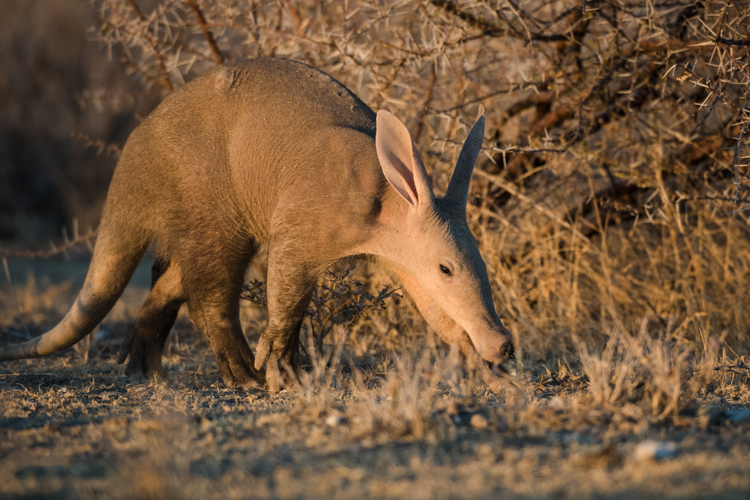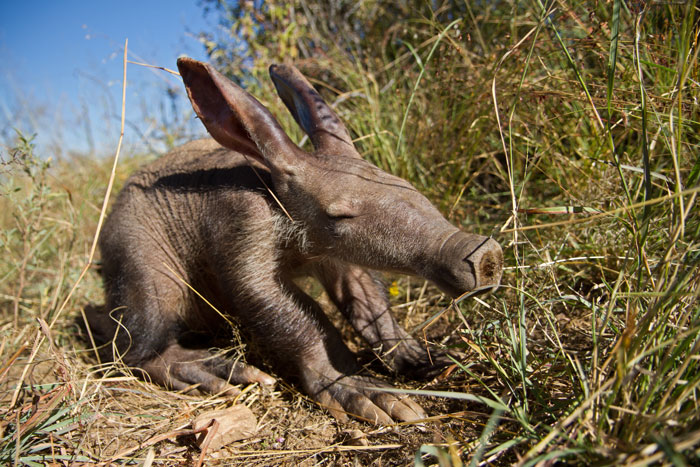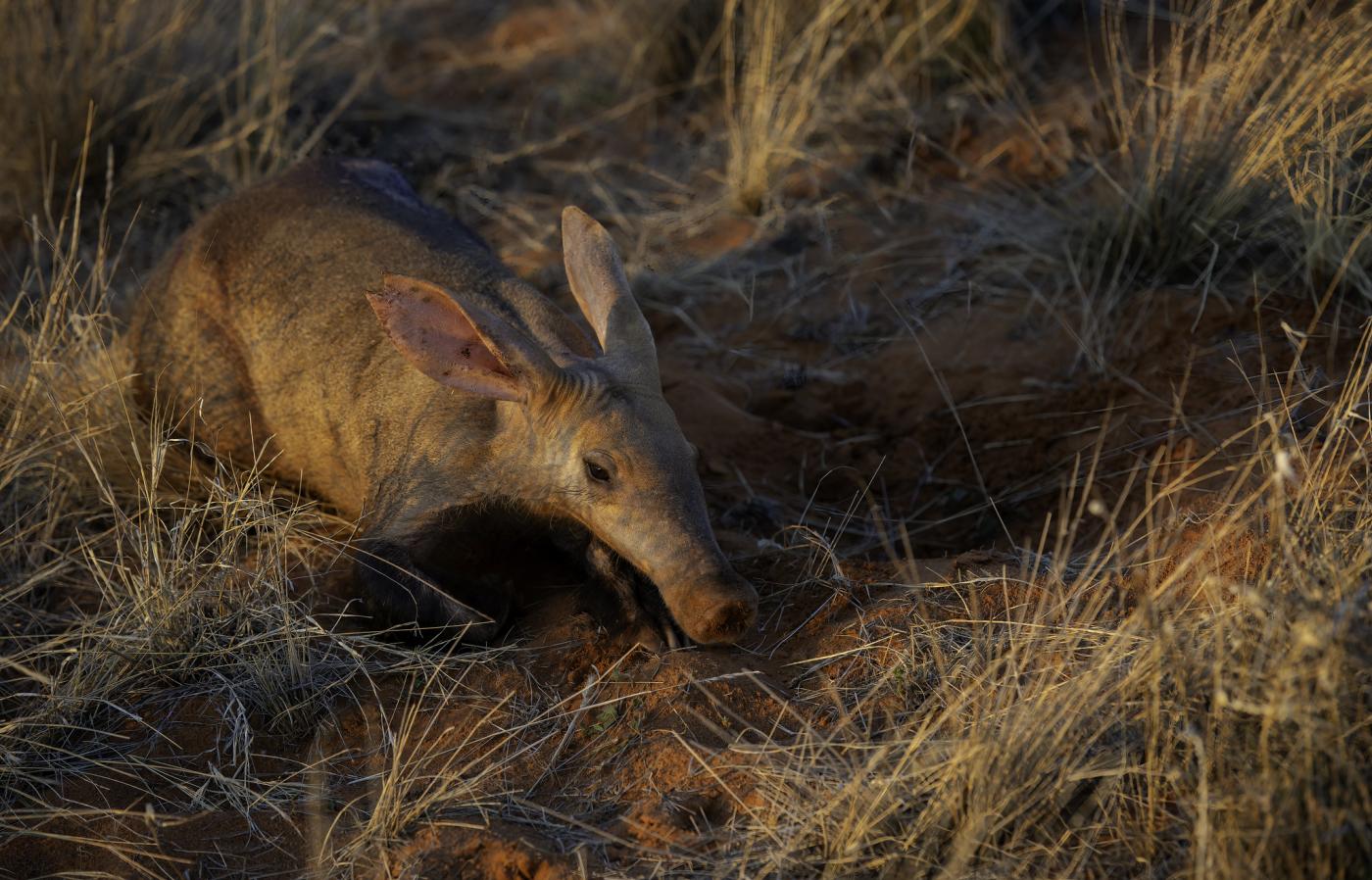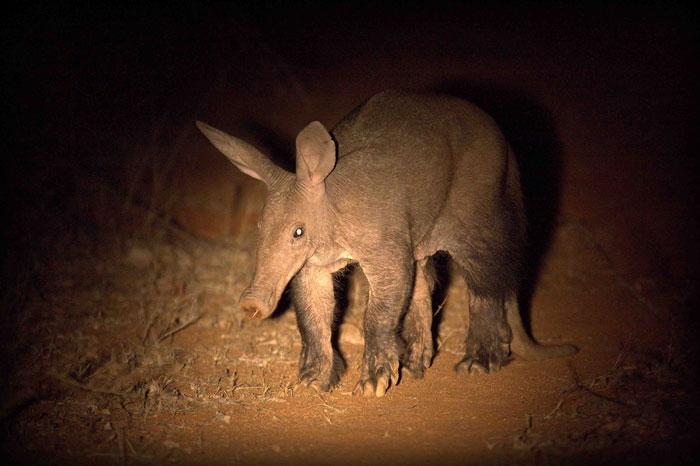Aardvark | Facts, Diet, Habitat, Weight, size & where to see
Aardvarks are little, swine-like animals that inhabit a diverse array of environments across Africa, south of the Sahara. They are predominantly solitary, residing in subterranean burrows during the day to shield themselves from the African sun’s heat, and venturing out in the cooler evening to forage for sustenance. Their name derives from Afrikaans in South Africa, signifying “Earth Pig” because of their elongated snout and porcine physique. Aardvarks are distinctive among animals as they represent the sole extant species within their taxonomic family. Until recently, it was commonly assumed that they were most closely associated with other insectivores, like armadillos and pangolins. However, this is not applicable to their nearest extant cousins, which are believed to be elephants.

Origins and Evolution
The Aardvark (Orycteropus afer), commonly referred to as an antbear, possesses a distinctive evolutionary composition. It has been evaluated as possessing the greatest score for evolutionary distinctiveness, based on the EDGE scientific methodology. This is due to its few close relatives and its independent evolution over millions of years. The Aardvark is the only extant species of its order, Tubulidentata, with its nearest relatives having become extinct during the Pleistocene epoch, around 2 million years ago.
Over millions of years, species have diverged and evolved in numerous ways, evidencing their common ancestry and demonstrating that evolution remains active. Nonetheless, certain species have stayed nearly identical from their primordial origins and are termed living fossils. An illustration of this is the aardvark, which exemplifies this evolutionary phenomena.
The aardvark’s distinctive morphological characteristics arise from its evolutionary history as an old species. The scientific designation, Tubulidentata, references one of its most distinctive characteristics: its dentition. In contrast to the teeth of most mammals, characterized by a singular pulp chamber encased in dentin and enamel, an aardvark’s tooth comprises numerous separate straw-like tubes bound by the same substance that anchors human teeth. These tubes are perpetually renewed and regenerated; a single aardvark tooth may have as many as 1,500 of these minute channels.
Humans have evolved more sophisticated dentition than the rudimentary 12-14 teeth of aardvarks; yet, aardvarks may still ingest 50,000 ants and termites in a single night using their adhesive tongues. Like early mammals, they have a proto-gizzard that facilitates the grinding of food as though they possessed teeth. Researchers have discovered that the aardvark’s genetic material is significantly conserved, indicating a closer resemblance to the DNA of primitive mammals compared to other species. This indicates that the aardvark has seen minimal evolutionary change from prehistoric times. Nature may occasionally amend its creations, although the aardvark exemplifies an entity that is beyond enhancement.
Size and Appearance
Aardvarks has a distinctive appearance among mammals, exhibiting morphological traits reminiscent of other animal species. They possess medium-sized, nearly hairless bodies and elongated snouts that first render them uniquely porcine, accompanied by thick skin that safeguards them from intense sunlight and insect bites. They can occlude their nostrils to prevent dust and insects from entering their nasal passages. They possess tubular, rabbit-like ears that can be erect or flattened to obstruct dirt ingress while underground. Aardvarks possess robust claws on their spade-shaped feet, and their longer hind legs compared to their front legs render them powerful diggers, capable of excavating substantial quantities of earth rapidly. Because they predominantly inhabit subterranean environments or engage in nocturnal hunting, their vision is suboptimal; yet, they adeptly navigate their surroundings with an exceptional olfactory sense, enabling them to locate prey and detect potential threats.

Where to see
Aardvarks inhabit many environments across sub-Saharan Africa, ranging from arid deserts to humid rainforests. The sole requirement, aside from ample access to food and water, is the presence of quality soil suitable for the excavation of their enormous burrows. Although adept at excavating sandy or clay soils, aardvarks encounter greater difficulty in rockier terrains when constructing their subterranean habitats, prompting them to relocate to areas with more favorable soil conditions for digging. Their burrows may extend up to 33 feet in length within a home range of one to two square kilometers. Their tunnels typically feature many exits, allowing them to exit headfirst and readily detect possible predators by their acute sense of smell.
Behavior and Lifestyle
Aardvarks are predominantly solitary creatures that congregate solely for mating purposes and are never observed in huge assemblages. They inhabit subterranean burrows to shield themselves from the intense daylight sun and potential predators. Aardvarks are nocturnal creatures that emerge from their burrows at night to forage for food and water, frequently traversing several miles to locate substantial termite mounds, utilizing their acute hearing and olfactory senses for guidance. Aardvarks, despite typically possessing a substantial burrow with a complex tunnel system, are capable of swiftly excavating small temporary burrows for immediate protection instead of returning to their primary habitat.]
Reproduction and Life Cycles
Aardvarks possess designated mating seasons that transpire annually. In accordance with the aardvark’s geographical location, offspring may be born either from October to November or from May to June in different regions. Female aardvarks typically produce a single offspring annually, following a gestation period of approximately seven months. Newborn aardvarks typically weigh approximately four pounds and are born with hairless, pink skin within the protection of their mother’s burrow. Neonate aardvarks remain in the security of their subterranean burrow for the initial two weeks of life before commencing excursions with their mother during nocturnal hours. Nevertheless, although they assist their mother in foraging for sustenance, they remain unweaned until approximately three months of age. Juvenile aardvarks cohabit with their mother in her burrow until approximately six months of age, at which point they establish their own burrow. The longevity of aardvarks in the wild remains rather ambiguous, however they typically exceed 20 years in captivity.

Diet and Prey
Aardvarks mostly consume ants and termites, favoring termites as their primary dietary source. Notwithstanding this, they are recognized for consuming various insects, including beetles and insect larvae. Aardvarks are anatomically adapted as insectivores, possessing robust limbs and claws adept at efficiently penetrating the hard exteriors of termite mounds. Upon breaching the mound, they employ their elongated, adhesive tongues to extract the insects within, consuming them whole, as they are subsequently pulverized in their muscular stomachs. Aardvarks possess a notable characteristic: their columnar cheek teeth, which serve no functional use. Larger ant species that require chewing utilize the incisors situated near the rear of their mouths. Aardvarks can employ similar strategies to infiltrate subterranean ant colonies.
Predators and Threats
Aardvarks, being nocturnal and residing in subterranean burrows for protection, face threats from many predators in their native habitat. The primary predators of aardvarks include lions, leopards, hyenas, and large snakes, particularly pythons, but this may vary based on the aardvark’s habitat. Their primary means of defense is rapid subterranean retreat. Nonetheless, they are recognized for their considerable aggression when confronted by these larger creatures. Aardvarks employ their robust, sharp claws to inflict harm on their assailants, in addition to delivering powerful kicks with their hind legs. Aardvarks face threats from humans who hunt them and obliterate their natural habitats.
Relationship with Humans
Aardvarks are rarely observed by the public as they remain concealed in their underground burrows during the day and only go out at night to forage for sustenance. In certain areas, they are pursued by humans for sustenance and are increasingly impacted by the encroachment of expanding human populations, which leads to the destruction of their natural habitats for the development of settlements.

Current Conservation Status and Contemporary Existence
The IUCN currently classifies aardvarks as a species of Least Concern. Although aardvark populations have undoubtedly decreased in certain nations, they remain constant in others and are frequently located in both protected areas and suitable habitats. They are increasingly impacted by habitat loss due to deforestation and the expansion of urban areas. Owing to their exceedingly cryptic characteristics, precise population estimates remain mostly unknown.
